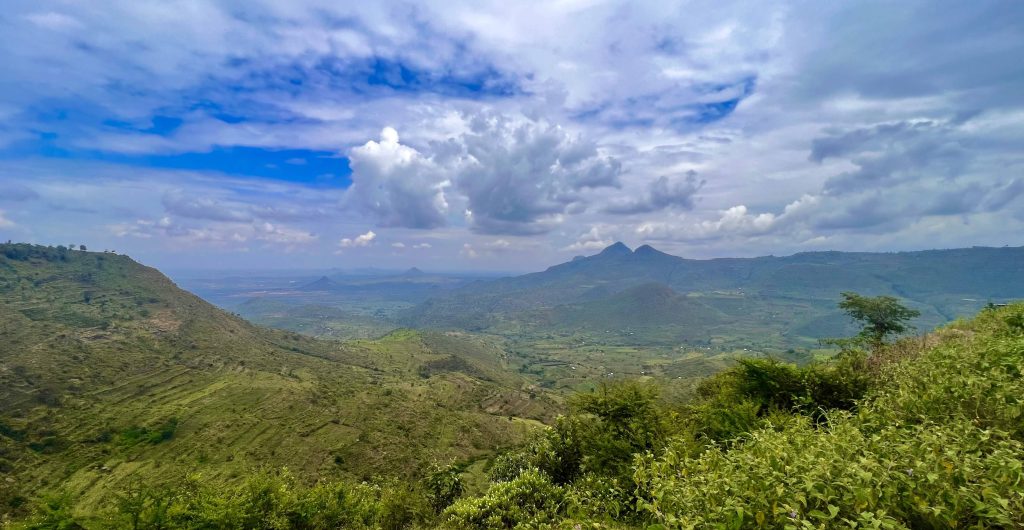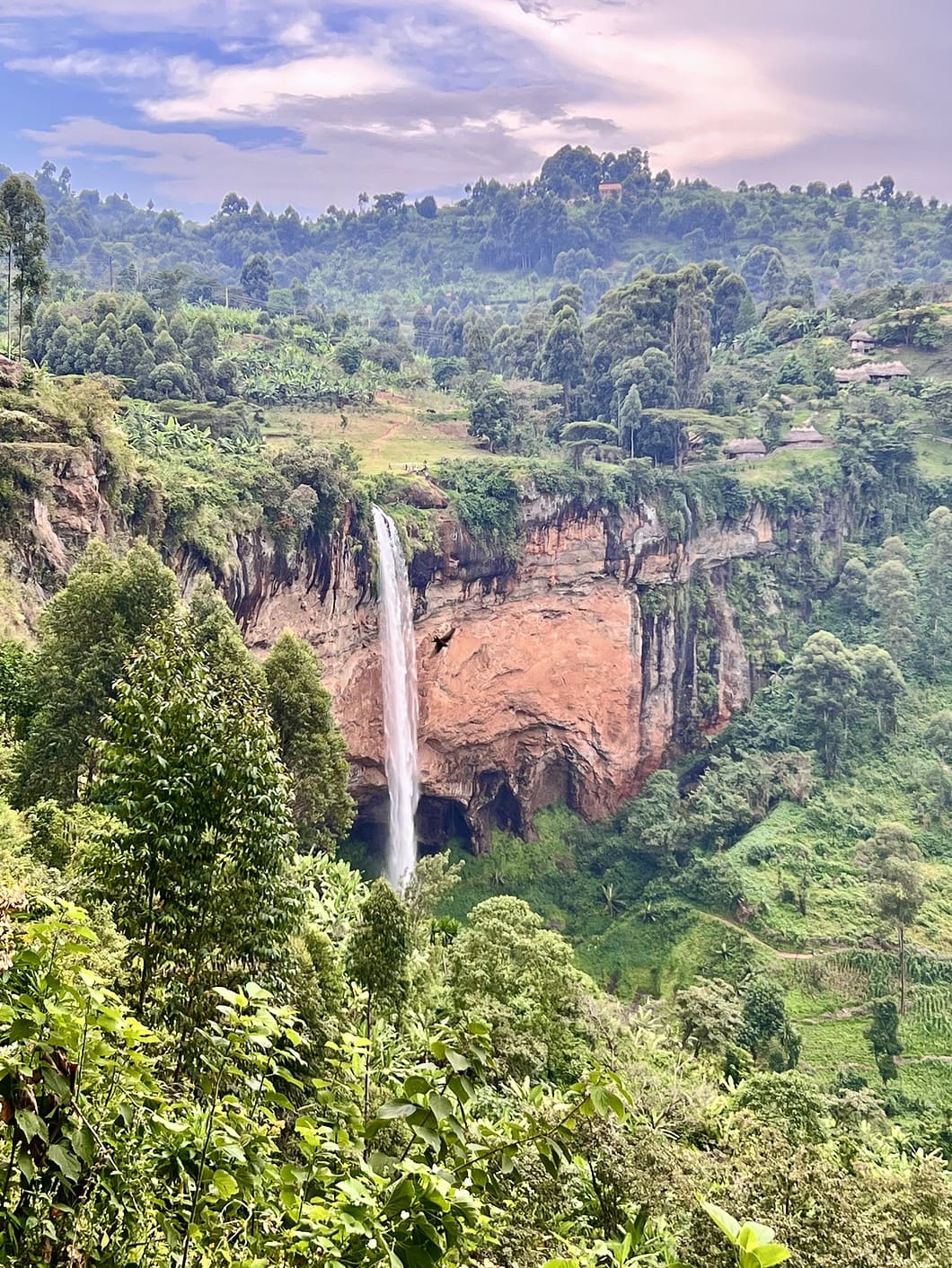Sipi Valley in Uganda is about as far off the beaten track as you can get. If you’ve even heard about the place, then you probably already share my affinity for pioneer tourism!
The tourism sector in Uganda is generally underdeveloped and undermarketed compared to neighbouring Kenya and Tanzania. Sipi Valley, situated on the northwestern side of Mount Elgon, is off the beaten track even for Ugandan standards, and that alone says something! The place, however, is spectacularly beautiful, and well worth a visit. While remote, it is also easily accessible through some surprisingly good roads, connecting it to Jinja and Kampala, and to Kitale in Kenya.
As you start approaching Sipi Valley, the scenery turns dramatic with roads winding through some steep mountain slopes. Time to get off your phone and enjoy some sceneries so pretty, you’d think they were taken from a fairytale!

The village of Kapchorwa is the only major settlement in the area, and the only place with supermarkets and ATMs (yes, Uganda is still a cash economy). A quick stopover for whatever you may need for your stay is advisable.
The Sipi Falls
The lush, green valley is home to three major waterfalls, the largest about 100 meters tall. In the absence of innovative naming, they are referred to as Sipi 1, Sipi 2, and Sipi 3 on Google Maps. With scant signage, finding them all may be a bit of a challenge for a visitor, though, and guides are readily available from the hotels.
Each waterfall is a small hiking opportunity through some beautiful surrounding nature and banana plantations. The paths are muddy and slippery, so proper footwear is strongly advised.
The main waterfall is also the most picturesque one. About 100 meters tall, it also offers the opportunity to go abseiling down alongside the casading water. The service is offered by a group of internationally trained and certified local operators who seem to know rather well what they are doing. A reassurance when your life is literally on the line.
While my 75-year-old parents passed the opportunity, my wife and daughters, aged ten and six, eagerly joined in on the experience. When the guide informed us that a four-year-old kid had abseiled earlier the same week, it was a done deal, with the girls literally jumping with excitement.
Having bungee jumped from the Victoria Falls Bridge before, abseiling is hardly a frightening prospect to me. Some adrenaline inevitably kicks in when you lean backward, though, and a thin but strong rope is the only thing keeping you from plunging down 100 meters alongside the waterfall!
After an epic descent, we had the toughest hike of the day by far, going up the steep hillside banana plantation up to our hotel. Needless to say, views of the valley were simply epic, and the beer at the hotel after the climb equally so!
Visiting a coffee farm
Sipi Valley is also a coffee-growing area, with many local smallholder specialty coffee farms offering guided tours. Whether you’re a coffee lover, like me, or you just like local experiences, those hours are well worth it. While my coffee consumption may not make a difference for Kenya’s GDP, no morning of mine is complete without a big mug or two of the dark, aromatic stuff, preferably from fresh-ground medium- or light-roast Arabica beans. I am already a big fan of the Uganda-grown ones (my dear Kenyan friends, please don’t kill me!), so this was bound to be an interesting experience.
So after a day of chasing waterfalls, we spent the next morning at the farm of an ambitious and determined premium coffee farmer called Joel Kaburu. In addition to his specialty coffee production and guided tours, he also provides advanced classes for professional coffee buyers. What an opportunity to learn from the best about my favorite drink!
Joel specializes in honey-processed coffee, using a production method where the cherry pulp is left on the beans when drying. This gives the beans a more balanced acidity and more intense fruitiness than their fully washed counterparts. After seeing the production process and tasting the final product, I was sufficiently impressed to buy a few kgs and get the gentleman’s contacts. He delivers to Nairobi, so I have a new coffee supplier now!
In addition to a thorough introduction to the art of coffee production and a taste of freshed roasted coffee from the farm, we also got an introduction to cascara, a tea made from dried coffee cherry pulp. Reddish and rich in antioxidants, it is an interesting experience, although I don’t see myself becoming a big consumer of it anytime soon.







Sipi Valley is mostly inhabited by the Kalenjins, a community mostly present in Kenya, with a headcount there of about 6.3 million against a mere 300,000 in Uganda. So strong is their link to Kenya that people in the area are proud to tell visitors about their Kenyan IDs and voter cards, and how they were bussed over to Kenya during the last election.
Being a destination mainly for intrepid travelers, the Sipi Valley area does not boast any world-class lodging. Simple accommodation is part of the charm of such places, though. The one place to avoid, however, is Sipi Valley Resort: In their marketing, they claim to be an upscale resort with a pool, a spa, and a fine-dining restaurant. Let’s start with the pool and spa: They don’t exist. They have a “restaurant” with a “menu”, but the only thing on offer is local-style goat and chicken. As for the rooms, I’d rather suppress that memory. Suffice it to say that their online marketing is a huge lie!
Down in the valley, there is a guesthouse called Home of Friends, featuring a decent garden restaurant. The enjoyable atmosphere of that place became the backdrop for the last lunch of 2023. While fast service is nowhere to be found or expected in such places, or in Uganda for that sake, it hardly matters in the lush, green and relaxing setting of the Sipi Valley, while enjoying the last hours of the waning year.















